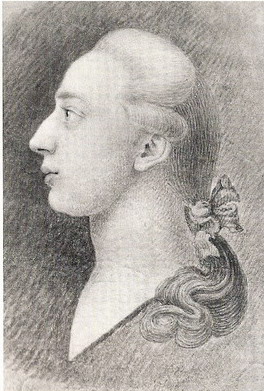On this page you will find an article written by Judith Summers.Casanova in Soho The Venetian adventurer Giacomo Casanova arrived in London on the afternoon of June 13th 1763. It was his first visit to the city, and his first port of call there was Soho. Carlisle House in Soho Square, a mansion on the site of the present-day St Patrick’s Church, was the home of forty-year-old Teresa Imer, Casanova’s childhood friend and the mother of his ten-year-old daughter, Sophia. The last time Casanova had seen Teresa had been in Holland in the winter of 1758/59. Then she had been a penniless singer, so deeply in debt that she had had to leave her twelve-year-old son Giuseppe with her creditors. Casanova had ‘redeemed’ the boy and taken him off to Paris, where Giuseppe was adopted by the adventurer’s vastly rich admirer, the widowed Marquise d’Urfé, and educated at her expense. In the intervening four years Teresa had completely turned her life around. With the help of her independently wealthy English lover, the Reverend John Fermor, she had come to England, rented Carlisle House and established it as London’s most fashionable entertainment venue. Mrs Cornelys - the pseudonym by which she was now known - was now London’s leading music impresario, and with an annual income estimated at some £24,000, she was also the highest-earning businesswoman in the land.
When he first saw Carlisle House, Casanova was more than a little jealous of Teresa’s success. He entered the mansion expecting that his old friend would fly downstairs to greet him. Instead, he was left waiting in the hall and informed that Mrs Cornelys was in conference with her lawyer and would join him for dinner that night. Casanova allowed himself to be taken by one of Teresa’s servants to a nearby French lodging house where the impresario had arranged for him to stay. Casanova, who was used to living the high life in Paris, took one look at this modest accommodation, then stormed out in a fury and walked down through Soho to the Haymarket. In a coffee-house here he met a fellow Italian who helped him to rent much smarter apartments in Pall Mall, near the Royal court at St James’s Palace. He moved in there the following day, and never quite forgave Teresa for the off-hand way she had treated him. While Teresa went on to forge a career as a soprano and intermittent theatrical impresario in Vienna, Paris and Bayreuth, lurching from success to disaster and back againwith alarming frequency, Casanova wasted the golden opportunities given him as a youth and became in turn a soldier, a gambler, a petty conman, a fiddler in a theatre orchestra and a wastrel. In his early twenties he was miraculously rescued from this downhill spiral by a wealthy Venetian nobleman, Senator Bragadin, who unofficially adopted him after Casanova helped to save his life. From then on, Casanova enjoyed the life of a wealthy playboy. In July 1755, following his love affair with a nun, he was imprisoned without trial in Venice’s most secure jail – the dreaded ‘Leads’ under the roof of the Doge’s Palace. Fifteen months later he made a daring escape and fled to Paris. Here he made a small fortune by helping to found and run the French State Lottery, and an even greater one from conning money out of the fifty-two-year-old Marquise d’Urfé, who believed that he was a brilliant mystic and alchemist. Suspected – rightly - of trying to seize hold of her entire fortune by fraudulent means, and with mounting debts, Casanova was forced to flee Paris for London in late May 1763. He took the opportunity to return Teresa’s son Giuseppe to his mother, who now needed him to help her run her business. Though highly popular, Carlisle House was a loss making venture, for its owner had a hopeless head for business, and spent far more on throwing her glamorous concerts and balls than they earned. Teresa was also engaged in an expensive and long-drawn out court battle with her one-time lover, Fermor, over the ownership of the business Unfortunately Giuseppe, who had been educated in the style of an indolent French aristocrat for the last four years, proved to be more of a burden than a help to her. When a bailiff arrested Teresa that summer, she sent both her children to appeal to Casanova to help her. Unable to resist the charms of his ten-year-old daughter, he reluctantly did so. After a brief but passionate love affair with a Portuguese noblewoman to whom he sublet part of his Pall Mall house in return for unspecified ‘companionship’, Casanova became besotted by a Soho courtesan. French-born seventeen-year-old Marianne de Charpillon lived in Denmark Street, on the borders with St Giles, with her Swiss mother, grandmother and aunts–an unscrupulous group of women who specialised in fleecing rich men of their money. From the moment she met Casanova, she teased and tormented him. No matter how much he spent on her, and what gifts he lavished on her, she refused to have sex with him. A past-mistress of the art of manipulation, whenever Casanova tried to get away from her, Marianne reeled him back like a fish on the end of a line. Frustrated beyond measure, Casanova resorted to violence, for which Marianne had him arrested. He took his revenge by teaching a parrot to say, “Miss Charpillon is more of a whore than her mother” and putting it on sale at the Royal Exchange in the City. Casanova had never been so consistently rejected by any woman, let alone a courtesan, and the experience all but ruined his self-confidence as a lover. In Soho’s Marianne de Charpillon, the great seducer had met his nemesis. With thanks to Judith Summers. |
||||
